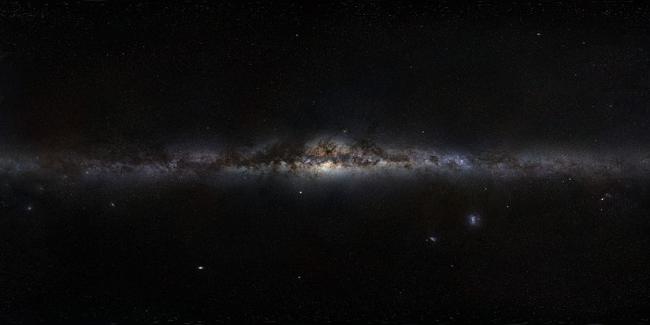November 23, 2024 06:30 (IST)

Asteroseismologists listen to the relics of the Milky Way: Study
Birmingham, Jun 9 (IBNS): Astrophysicists from the University of Birmingham have captured the sounds of some of the oldest stars in our galaxy, the Milky Way, according to research published in the Royal Astronomical Society journal Monthly Notices on Thursday.
The research team, from the University of Birmingham’s School of Physics and Astronomy, has reported the detection of resonant acoustic oscillations of stars in ‘M4’, one of the oldest known clusters of stars in the Galaxy, some 13 billion years old.
Using data from the NASA Kepler/K2 mission, the team has studied the resonant oscillations of stars using a technique called asteroseismology. These oscillations lead to miniscule changes or pulses in brightness, and are caused by sound trapped inside the stars.
By measuring the tones in this ‘stellar music’, it is possible to determine the mass and age of individual stars. This discovery opens the door to using asteroseismology to study the very early history of our Galaxy.
Dr Andrea Miglio, from the University of Birmingham’s School of Physics and Astronomy, who led the study, said: "We were thrilled to be able to listen to some of the stellar relics of the early universe. The stars we have studied really are living fossils from the time of the formation of our Galaxy, and we now hope be able to unlock the secrets of how spiral galaxies, like our own, formed and evolved."
Dr Guy Davies, from the University of Birmingham’s School of Physics and Astronomy, and co-author on the study, said: "The age scale of stars has so far been restricted to relatively young stars, limiting our ability to probe the early history of our Galaxy. In this research we have been able to prove that asteroseismology can give precise and accurate ages for the oldest stars in the Galaxy."
Professor Bill Chaplin, from the University of Birmingham’s School of Physics and Astronomy and leader of the international collaboration on asteroseismology, said: "Just as archaeologists can reveal the past by excavating the earth, so we can use sound inside the stars to perform Galactic archaeology."
Support Our Journalism
We cannot do without you.. your contribution supports unbiased journalism
IBNS is not driven by any ism- not wokeism, not racism, not skewed secularism, not hyper right-wing or left liberal ideals, nor by any hardline religious beliefs or hyper nationalism. We want to serve you good old objective news, as they are. We do not judge or preach. We let people decide for themselves. We only try to present factual and well-sourced news.
Support objective journalism for a small contribution.
Latest Headlines
Plastics treaty: UN experts call for centrality of human rights Fri, Nov 22 2024
UNICEF report warns children could face eight times more heatwaves in 2050 than in 2000 Wed, Nov 20 2024
Toxic air and smog choke Delhi as experts at COP29 in Baku warn how dragging feet on fossil fuel reduction can cause catastrophe Tue, Nov 19 2024
Elon Musk's SpaceX launches Indian satellite on Falcon 9 rocket Tue, Nov 19 2024
Elon Musk's SpaceX collaborates with ISRO to launch GSAT-20 communications satellite this week Sun, Nov 17 2024
More than 260 million people in USA will be either obese or overweight by 2050: Study Fri, Nov 15 2024
WHO-released study shows global diabetes epidemic reaches critical levels with 800 million cases Fri, Nov 15 2024
ISI Kolkata's Prof Neena Gupta wins Infosys Prize 2024 for her exemplary work in the field of Mathematical Sciences Fri, Nov 15 2024







